
In a way, smartphones continue to stagnate year after year as changes become more and more minimal with each new generation. But with its new Galaxy S23 Ultra, Samsung shows that, to some extent, there’s still reason to get excited about minor changes. This is easily the best Samsung smartphone yet not because it introduces new features, but because it takes some of the core fundamentals and just about perfects them. Others… not so much.
Hardware & display
The same, but different
Compared to the device that came before it, the Galaxy S23 Ultra feels virtually identical to the Galaxy S22 Ultra. That’s not a bad thing! The phone feels very “Samsung-y” throughout, and evokes the same feeling that Samsung’s flagships have for years.
Users who are upgrading from older Galaxy Notes will especially feel right at home. As those smartphones continue to age and lose access to Android updates, Samsung has really nailed the merger of the Note’s experience with that of the Galaxy S lineup.
The layout on the Galaxy S23 Ultra is fairly standard for a Samsung device, with the left side of the frame entirely blank, and the top with just a microphone. The right side has volume keys at the top and the mmWave 5G “window” below that. The bottom houses, from left to right, the S Pen, speaker, USB-C port, and the SIM slot – Samsung is sticking with physical SIMs, unlike certain others. Notably, there’s a microphone right next to the SIM slot, which you’ll want to be careful with if you’re switching SIM cards, as the microphone cutout is the same shape and size.
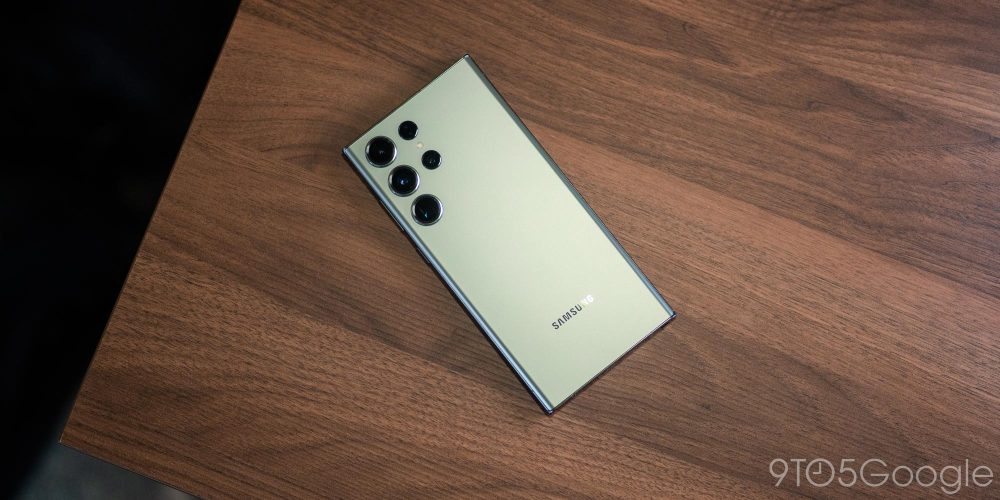


One of the best things about the Galaxy S23 Ultra’s hardware is how it feels, and that it is quite durable. Samsung utilizes the same strengthened “Armor Aluminum” for its frame that Samsung has been using for years now, which is polished but still quite grippy if you decide to go without a case. The matte glass on the back also makes it fairly easy to keep your grip on the phone.
The green color I’ve been using is nice, but not particularly attractive. It looks drastically different depending on the lighting conditions, but most of the time it feels a bit on the boring side. What I’m happier to see is that, finally, Samsung is granting its “Ultra” phone the same color choices as the rest of the lineup, with even more available directly from Samsung’s website.
The evil is nearly vanquished
The display itself is actually identical to its predecessor – a 6.8-inch, SuperAMOLED display at QHD+. It has a smooth 120Hz refresh rate and hits maximum brightness of 1,750 nits. While there are brighter displays out there, Samsung strikes a good balance overall, and this is still one of the best displays you’ll find on a smartphone today.
And on top of that, Samsung is finally fixing one of its most annoying quirks.
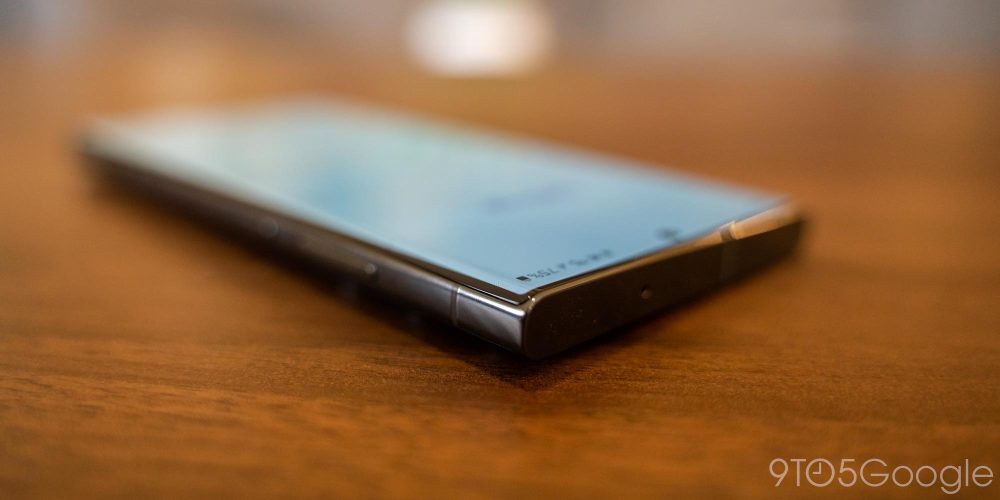
The Galaxy S23 Ultra lessens the curved sides of the display. It’s a welcome change that addresses one of our biggest complaints from the Galaxy S22 Ultra, and so many prior Samsung flagships. Curved screens tend to reflect light in unpleasant ways, and it also makes it very difficult to install screen protectors.
For the S23 Ultra, Samsung cut back the curve by 30%, which goes a long way in making this feel better. The workable area of the display is almost entirely flat, with only a slight curve to the very edges. There’s no downside to this move, but it’s also not quite enough. By still not being flat, there are still some reflections, and still some screen protector limitations. It’s a step in the right direction, but the evil that is curved screens still isn’t quite gone.
Yep, there’s an S Pen
And finally, there’s the S Pen. Like last year’s Galaxy S22 Ultra, this year’s model is a Galaxy S flagship that carries on the legacy of the Galaxy Note, and it does so brilliantly. The embedded S Pen is easy to pull from its silo and equally comfortable in use – which is to say it’s still small and not exactly the same as using a traditional pen, but it gets the job done well.

If you’ve used a Samsung Galaxy smartphone with an S Pen within the past several years, you’ll feel right at home here because, frankly, nothing has changed. The only noticeable difference comes in latency, which has been greatly improved compared to older Galaxy Note devices, but is the same as the Galaxy S22 Ultra. It’s virtually indistinguishable from using a real notepad.
Yet, still, I didn’t find myself using it all that often. The S Pen is a tool for a very specific customer, and I’m just not it.
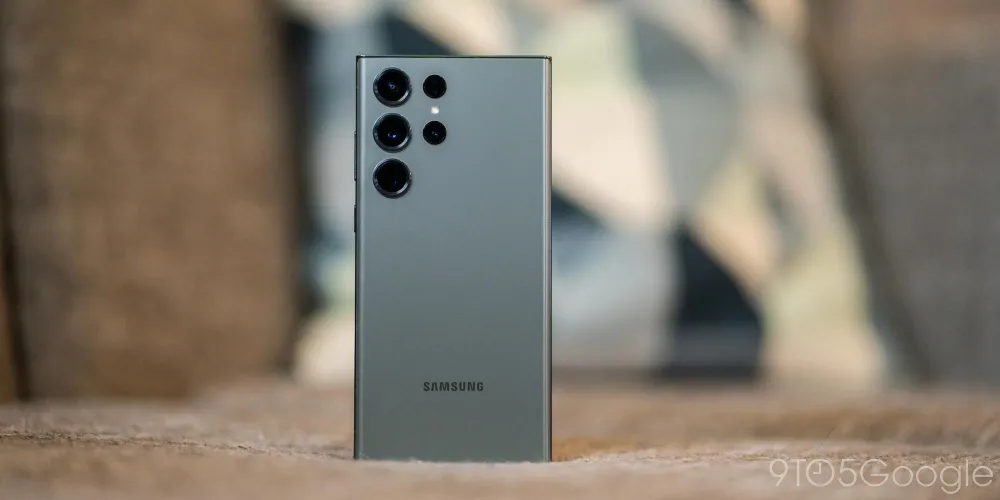
Software & performance
One UI continues to shine
Out of the box the Samsung Galaxy S23 Ultra runs on top of Android 13, with Samsung’s One UI skin over that. And as it has been for years now, it’s one of the best software experiences you’ll find in an Android phone.
One UI is pleasantly laid out and cohesive. Anyone who’s used a modern Android phone won’t find anything to trip them up here, even if that device was built by a different manufacturer.

It’s also packed with some of the features that make modern Android great, such as advanced multitasking, Material You colors throughout (which you can turn off if you want), as well as Samsung’s various additions. One UI 5.1 is what you’ll find at launch on the Galaxy S23 Ultra, and it builds on the core of Android with an improved and more customizable lockscreen, as well as nice quality-of-life features including the ability to cut objects out of images and useful widgets.
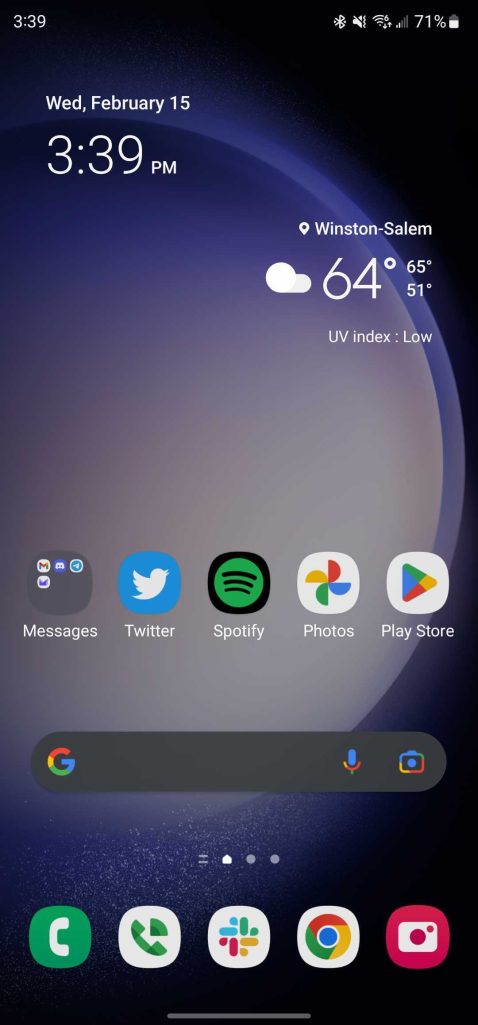
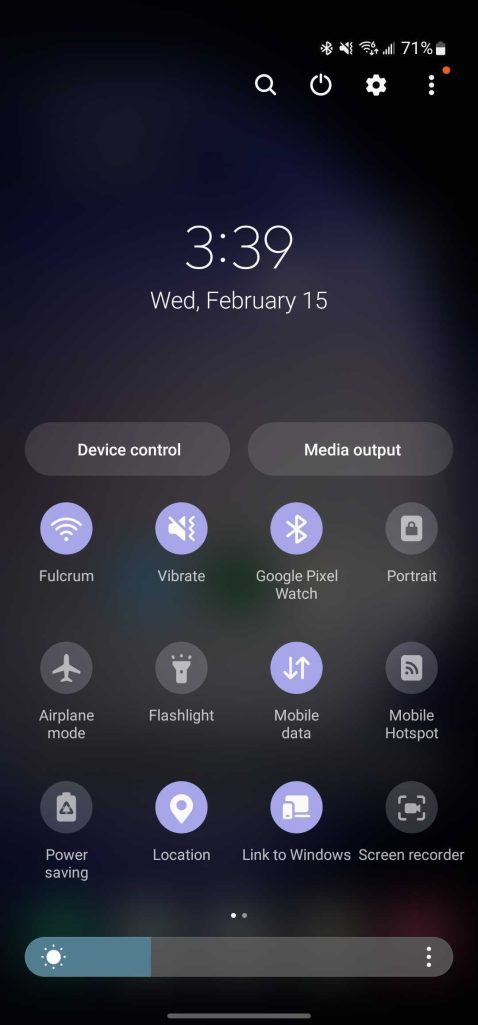

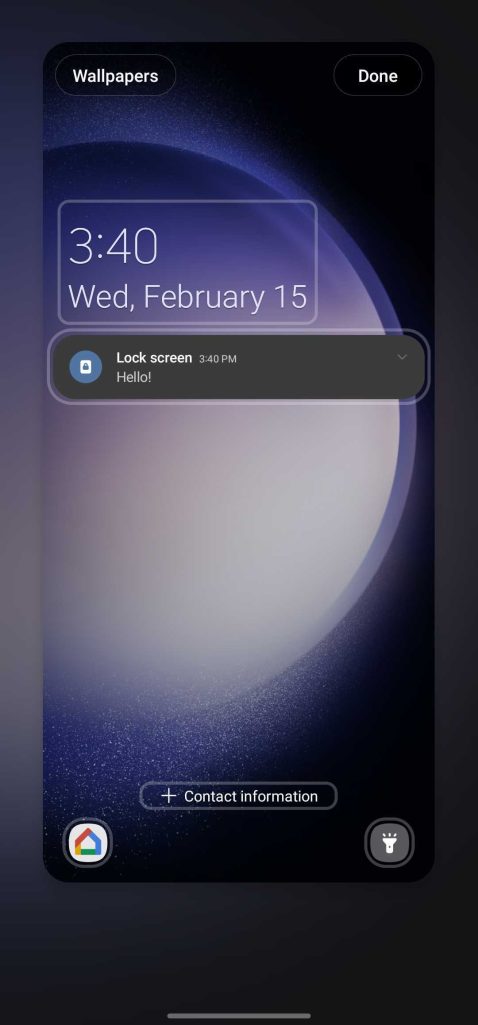
Plus, if you’re invested in Samsung’s ecosystem, there are some great cross-device features. For instance, I’ve been using the Galaxy Book 3 Pro 360 alongside the S23 Ultra, and enjoying the useful features from “Link to Windows” throughout my time so far.
But there are still little frustrations throughout. While this phone does support Google’s upgraded Fast Pair for quicker setup, Samsung still forces you through “Smart Switch” if that doesn’t trigger, and that’s an annoying experience. It’s slower and less reliable than traditional Android transfers, and requires downloading an app if you’re not moving over from a different Galaxy phone. There’s also the multitude of duplicate apps and services throughout, as Samsung continues to be pushy with its own offerings. A good example of that is with Fast Pair, a Google-provided service that pairs earbuds and accessories to your phone, but Samsung has its own version of that which works specifically with its own accessories. The duplication feels unnecessary, and just serves to bloat the system.
Updates for years to come
But what’s best about Samsung’s software is the commitment behind it. The Galaxy S23 Ultra and its siblings are eligible for four years of major Android updates and five years of security updates.
That’s class-leading support in the Android world, and better than what even Google brings to the table. Some other brands, such as OnePlus, have adopted similar schedules, but Samsung still wins out on the speed of security patches (which are generally monthly) as well as the speed of major updates. With its Android 13 rollout last year, Samsung had updated all of its recent flagships through November and December, the only brand to do so during 2022 outside of Google itself.
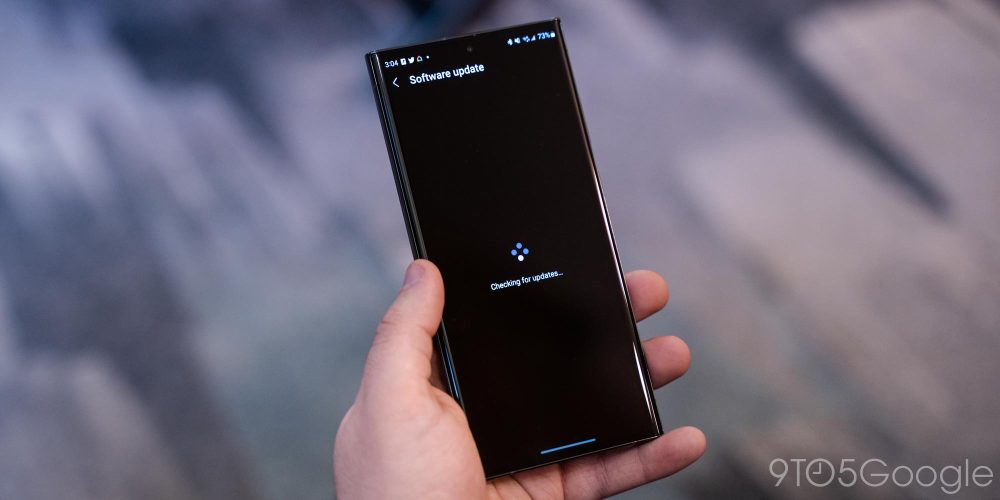
Snapdragon 8 Gen 2 for Galaxy is great
Under the hood of the Galaxy S23 Ultra is the Snapdragon 8 Gen 2 “for Galaxy,” and it’s a chip that’s an absolute powerhouse.
The upgraded version of Qualcomm’s latest flagship chip is incredibly fast, and combined with the faster UFS 4.0 storage and 12GB of RAM on my review sample, it leads to a phone that just blazes past everything I’ve used in the past year. Looking just at how it feels to use the Galaxy S23 Ultra, the best comparison I can make is that this is the first time I’ve felt someone makes a device that feels faster than a Pixel. Google’s software experience, even on lesser hardware, generally feels like the fastest and smoothest overall experience on Android, but the Galaxy S23 Ultra certainly beats that out. I can only imagine what Google’s software would feel like on this hardware, as the legacy of “TouchWiz” hiding underneath One UI still holds Samsung back, I feel.

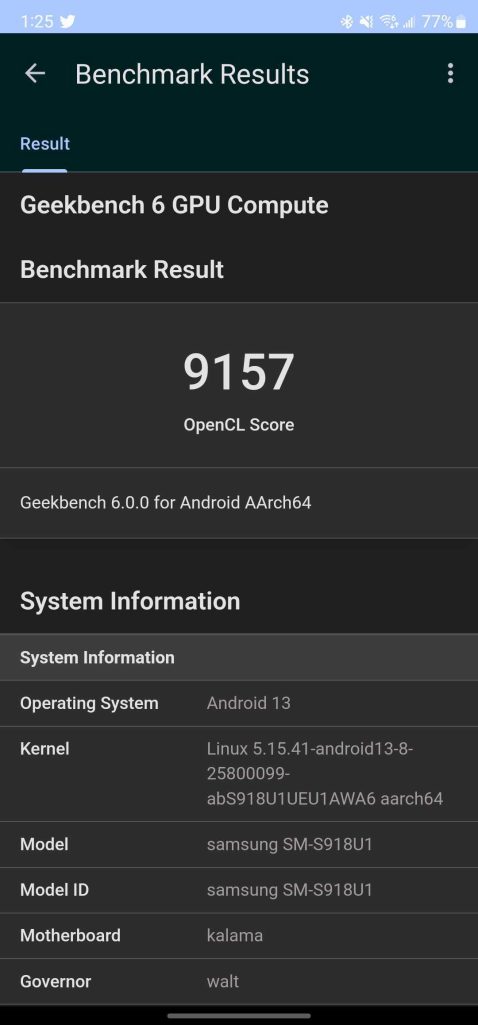

That power also helps provide boosts to day-to-day use that you don’t necessarily see. Photo processing is nearly instant, and you might also notice that files transfer more quickly, or that apps load up just a bit faster. I don’t think most folks will push this package up to its limit, but the raw performance here ought to provide a killer experience for years to come.
What about gaming?
In games like Rocket League Sideswipe and Fortnite, the Galaxy S23 Ultra holds up well. I could feel it warming up relatively quickly, but even after 20-30 minutes of play, it was still easy to handle, and still performing well. I never noticed any significant thermal throttling. That’s not to say throttling doesn’t happen – it does – but it’s something you probably won’t notice unless you’re a competitive mobile gamer. Samsung’s “Game Booster” software can also further improve performance by tweaking some settings.

And in terms of heat management, the Galaxy S23 Ultra holds up very well! It might not outclass a dedicated gaming smartphone in this area, but the phone rarely warms up unless you’re throwing more intensive games at it, and even using wireless Android Auto never really warmed up the device to a considerable degree.
The biggest impact here is one that customers in the United States won’t notice. Snapdragon 8 Gen 2 is in place for Samsung’s Galaxy S23 lineup globally this year, instead of being available only in select countries as it has in years past. That’s a big deal, and makes Samsung’s flagship a much more compelling offer in places such as Europe, where Exynos used to somewhat ruin the company’s devices.
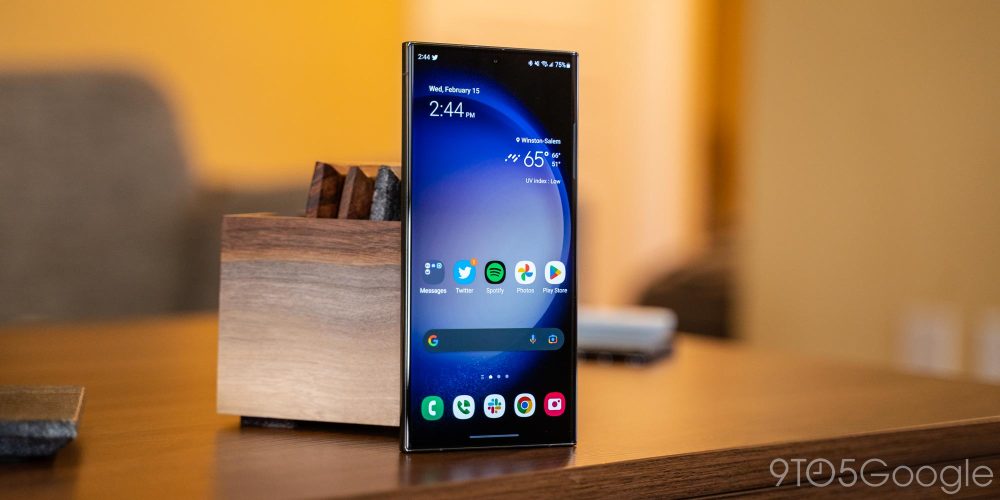
Battery life
In a word, phenomenal
I’ve spent the better part of two weeks with the Galaxy S23 Ultra, and I have to say that by far the biggest thing that’s left an impression on me is that of battery life.
Like the past couple of Galaxy “Ultra” devices, the 5,000 mAh battery under the hood is large, but it’s the many optimizations throughout that really make this device stand out.
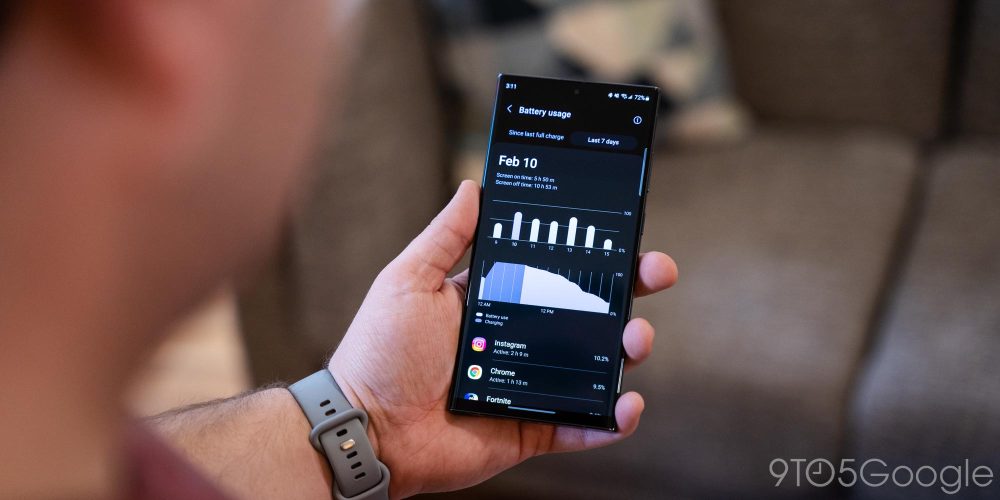
First, let’s look at some numbers.
I pulled four consecutive days from my past week of Galaxy S23 Ultra usage (the second week of using the device, meaning it’s had time to learn my patterns), and averaged around 15 per day of use, with 4 hours and 15 minutes of screen time on average. Throughout that whole week, the lowest battery level I saw before going to be was 25% after just shy of 16 hours of use and 4 hours and 30 minutes of screen time. That day was full of 5G and LTE use, as well as a lot of running Google Maps via wireless Android Auto. Another heavy day saw just shy of 6 hours of screen time with around 30% left at bedtime.
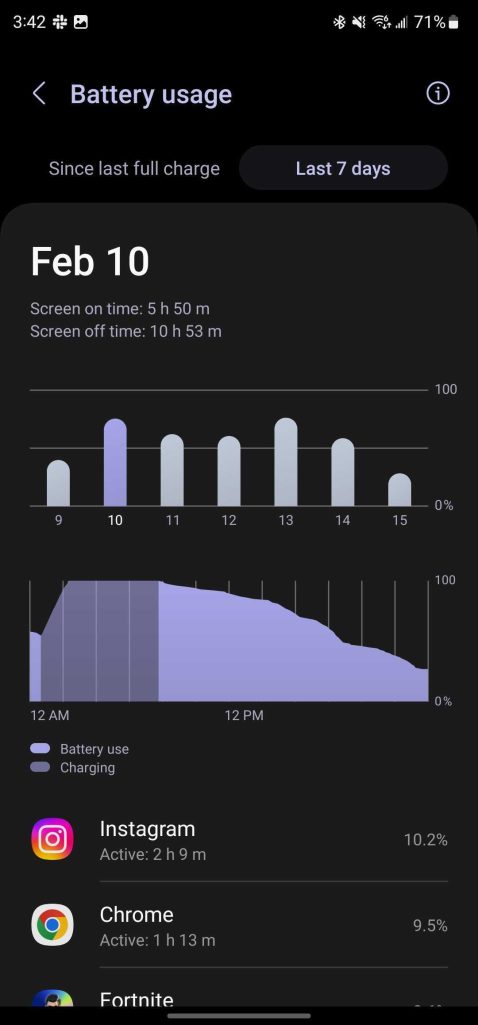
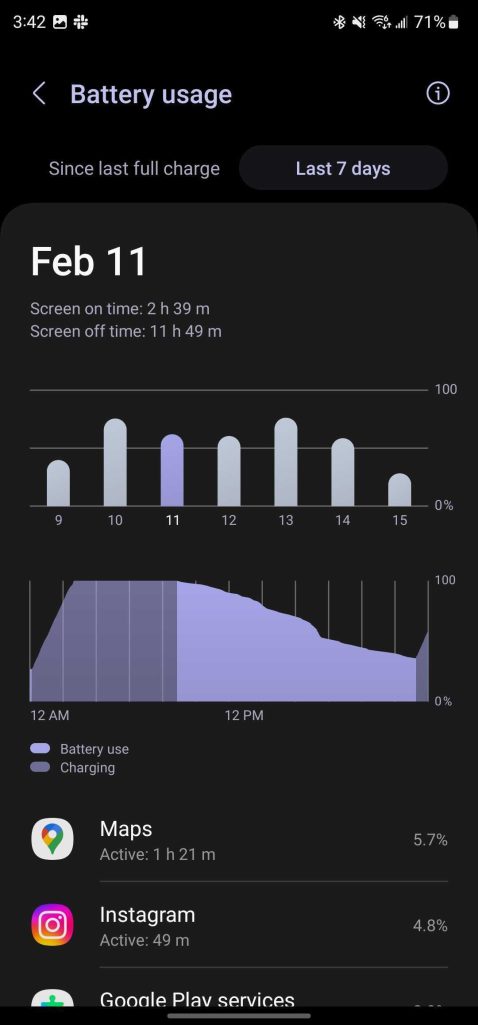
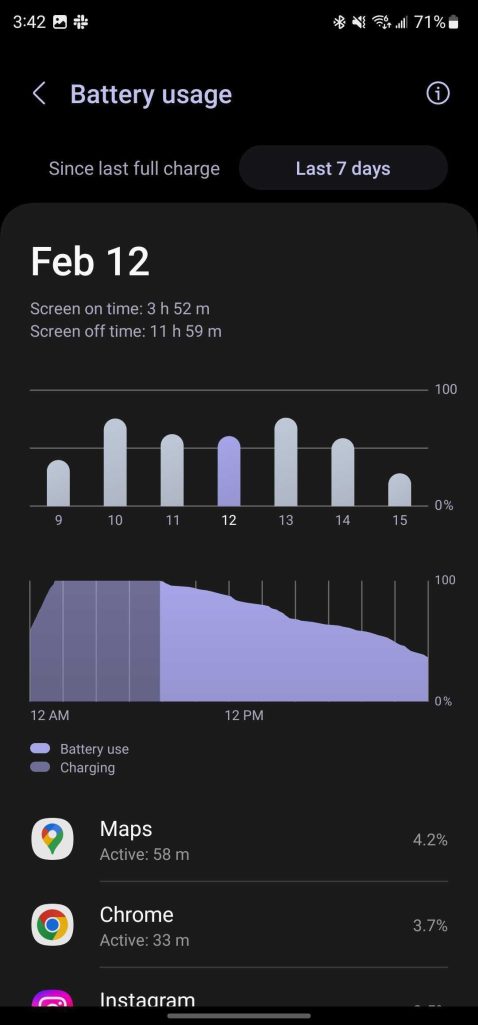
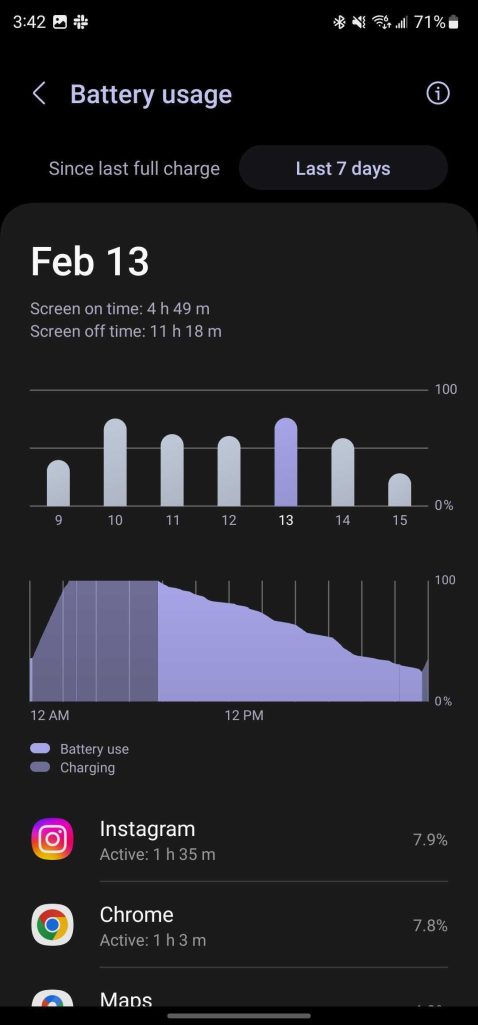
The Galaxy S23 Ultra’s battery life is impressive where it counts. Whether or not it can outlast half a dozen other devices in a drain test can be great, but what’s important is that the phone holds up to real-life usage incredibly well. There’s not been a single day during my two weeks using the Ultra where I’ve had even the slightest bit of battery anxiety, and that’s by far, at least to me, the most attractive thing about this smartphone.
And that’s also coupled with the charging methods you’d expect for a flagship in 2023. There’s wired charging that tops out at 45W over USB-C. That’s not the fastest you’ll find out there today, but Samsung’s use of the open Power Delivery standard means that charging options are affordable and abundant, something that’s especially good given there’s no charging brick included in the box. Then, there’s also Qi wireless charging support, with up to 15W. That’s what I primarily used, since I only ever needed to charge this phone overnight.
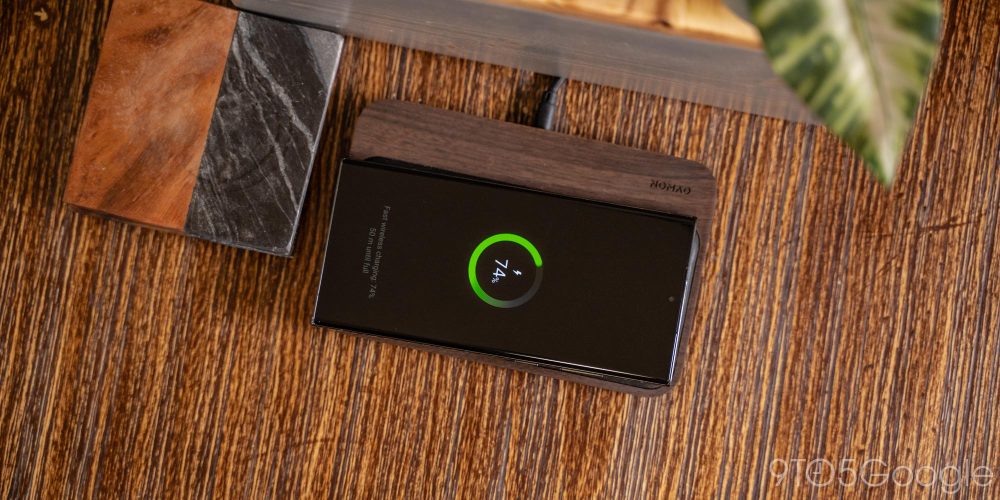
Camera
200MP is overhyped, and wildly inconsistent
Photography is one of the areas where high-end smartphones are especially competitive, and Samsung is leaning hard on its new 200MP camera in the Galaxy S23 Ultra to stand out.
The problem? It just doesn’t.
The idea behind cramming 200MP into a smartphone is to combine several pixels into one which boosts the clarity and, even more so, the amount of light. In some scenarios, this does work. Shots from this sensor capture excellent detail outdoors, but in anything less than ideal shooting conditions, it’s not all that great.

When it works, the Galaxy S23 Ultra’s camera can be truly stunning, but as has been the case for years now, I find Samsung’s software and processing are just far too inconsistent and easy to trip up.
Paramount among those complaints is motion, which Samsung still just can’t seem to handle.
Shots that include any sort of motion generally turn into a blurry mess, especially if lighting conditions are anything less than a fully sunny day. Throughout my review period, I’ve noticed this on multiple occasions, including trying to take pictures of my pets, as well as a friend’s newborn baby.
Samsung is bragging on the Galaxy S23 Ultra’s low-light improvements when it comes to HDR processing and bringing out light, but I’d rather have a sharp, too-dark image versus a blurry, well-lit shot.
Some will point to “Camera Assistant,” a tool from the brand’s “Good Lock” catalog, which has a handful of settings to adjust the shooting experience. This includes a “Quick Tap Shutter” and processing tweaks, but in my testing, they don’t help at all. If anything, these changes just ruin photo quality. Since most of the pictures I take are of my pets, I kept the phone in “prioritize speed” mode, which did quite a number on the quality of many of my shots. That isn’t a choice anyone should have to make, especially on a $1,200 phone sold in 2023 that Samsung says has “raised the bar with a 200MP camera.”
See our full-size Galaxy S23 Ultra sample images here
This sole problem is the main reason I keep carrying a Pixel smartphone. Samsung’s cameras can be stunning, but they remain too inconsistent to be trusted in a lot of scenarios. If long-range zoom shots or still objects are what you’re mainly shooting, this is a winner. But if you take pictures of pets, people, and especially kids, the Galaxy S23 Ultra is not the phone you should buy.
There are also improvements to low-light, but even those are a bit of a mixed bag. I often feel that Samsung’s processing is bringing out the highlights too much, crushing shadows in the process and leaving night shots feeling a bit muddy. The same is often true of standard HDR, which is very aggressive on shadows, and even led to an HDR “ring” on an indoor shot. That was an unpleasant surprise and something I’ve never seen on any other device.
That’s quite a bit of bad, so what’s good?
The biggest advantage Samsung’s camera setup offers is with flexibility. This is the only smartphone sold in the US that can go from an ultrawide shot to 10x without any noticeable dip in quality, and zoom is really where Samsung shines. The 3x and 10x telephoto lenses capture crisp details. All of my favorite shots from this phone thus far have been from those lenses rather than the primary 200MP sensor.
These lenses prove that the Galaxy S23 Ultra is capable of some killer shots. The image below of the squirrel in a tree is perhaps my favorite shot on a smartphone in the past several months, but it’s also the only shot I’m completely happy from the two weeks I’ve used this phone. Some of that blame can definitely be put on the lousy weather I’ve been dealing with this month, but I don’t feel it makes up for it completely.
Where I’ll also give Samsung a lot of credit is with video. I don’t have any samples to share, but in the testing I’ve done, I’ve been very happy with the clips I’ve taken, especially at 4K60.
Of course, by default the Galaxy S23 Ultra doesn’t actually use its full 200MP sensor, instead “binning” those pixels to the point where a processed image is 12MP. Does anything change when you switch that? Yes, actually.
200MP images from the Galaxy S23 Ultra come out with less of a processed look, and often with a bit more detail in some areas. However, I generally found myself preferring the default setting overall. Plus, 200MP shots can take up around 4-5x as much storage space. Even with a minimum of 256GB this year, that’s still going to add up quickly.


And yes, in theory, you can fix a lot of the issues with the camera using Samsung’s “Expert RAW” app which contains powerful manual controls and is available through a shortcut in the camera app. That’s a stellar experience for content creators and photography enthusiasts, but smartphone cameras should be designed first and foremost with quick shots in mind. By that measurement, the Galaxy S23 Ultra falls well short of the competition.
What about the selfie camera?
Samsung oddly switched from a 40MP front-facing camera on the Galaxy S22 Ultra down to a 12MP sensor on the Galaxy S23 Ultra. This doesn’t totally decimate images shot on the newer phone, and according to our resident selfie camera expert Max Weinbach, it might actually be an overall improvement.
Max says:
Samsung’s new selfie camera does seem like an improvement over the 40MP sensor Samsung’s been using for the past 2 years in the Ultra models. It does provide an overall more pleasing image and has great improvements in video quality. Third-party app support for video looks to have some minor improvements but that likely comes from the improved sensor.
Where the selfie camera falls short is processing. The phone seems to remove all shadows on my face, meaning the shape and contrast that gives your face structure disappears. This results in what looks like more even lighting, but in reality removes the structure that would normally emphasize anyone’s given cheekbones and jawline. While it might look more appealing at first glance, on further inspection it seems to remove the important classic aspects that define facial structure.

The verdict on the Galaxy S23 Ultra’s camera, for me, is that it hasn’t really improved much in real-life use. Despite having 92 more megapixels than its predecessor, shots are generally the same, and with the same frustrations that have plagued Samsung’s smartphones for years. At its best, the Galaxy S23 Ultra’s camera is not an upgrade from its predecessor.
By that measurement, it just feels like a disappointment.

Tidbits
Speakers
The speakers on the Galaxy S23 Ultra are pretty standard for a modern flagship, with a single primary driver at the bottom of the device backed up by the earpiece which helps produce stereo sound. But Samsung has made the driver here both louder and crisper compared to the S22 Ultra. Music sounds a bit fuller as a result, which is good!
Haptics
Haptic vibrations have never been particularly impressive on most Android phones, and they’re still nothing crazy on the Galaxy S23 Ultra. The haptics aren’t bad, but they also don’t really stand out. They’re just… there.
Fingerprint sensor
The ultrasonic fingerprint sensor in the Galaxy S23 Ultra is essentially unchanged from the past few years of Samsung flagships, mainly because it’s the same model used since the Galaxy S21 series. It’s fast, accurate, and easy to set up.

Cellular
The Snapdragon 8 Gen 2 for Galaxy and its accompanying X70 modem have been excellent in my usage, with strong cellular connections even in areas where I usually notice issues on other devices. There’s no major jump from the X65 that was found in last year’s Galaxy Z Fold 4, but my testing over the past two weeks with T-Mobile in the Winston-Salem, NC area has been great. I even noticed a ton of “Ultra Capacity” coverage that I hadn’t on previous devices in the area – I don’t use T-Mobile regularly, though, so this might just be a result of expanded coverage by the carrier over the past few months.
Final Thoughts
A high bar to clear for 2023 Android phones
The Galaxy S23 Ultra is, on paper, a very similar phone to the S22 Ultra that came before it. Yet, it also manages to outshine its predecessor in ways that are impactful, such as in battery life and the feel of the hardware. Should you upgrade from last year’s model? Probably not, but it’s also not an upgrade that won’t deliver a better overall experience.
Where the Galaxy S23 Ultra and its $1,200 price tag makes sense is for those still holding on to older Galaxy Note devices, especially the Galaxy Note 9 and Note 10. With support having ended for those devices, it’s certainly time to consider an upgrade, and the Galaxy S23 Ultra is perfectly suited to the jump.
This smartphone also sets a high bar for other Android smartphones coming out this year. While I feel it falls on its sword a bit in the camera department, this phone just gets so much right.
The Galaxy S23 Ultra is truly a jack-of-all-trades, and it manages that while still providing the best battery life in a flagship Android phone sold today.
You can buy the Galaxy S23 Ultra from Samsung.com and major retailers such as Best Buy and Amazon. If you’re reading this review on February 16, pre-orders are still open with $100 in bonus credit that can be used towards accessories, and you can score an extra $50 in credit using our special link. All major carriers also sell the Galaxy S23 series, and all retailers including Samsung.com are offering the 512GB model for the price of the 256GB model.
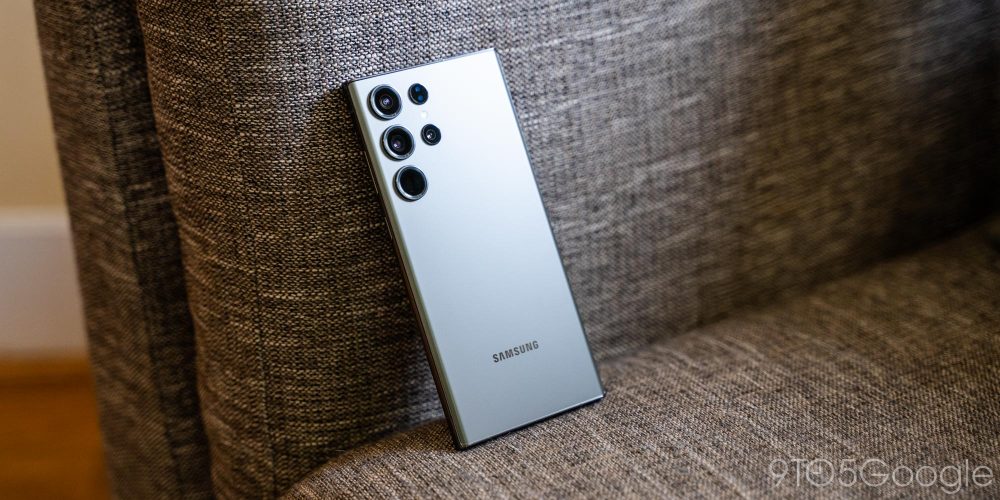
FTC: We use income earning auto affiliate links. More.




















Comments